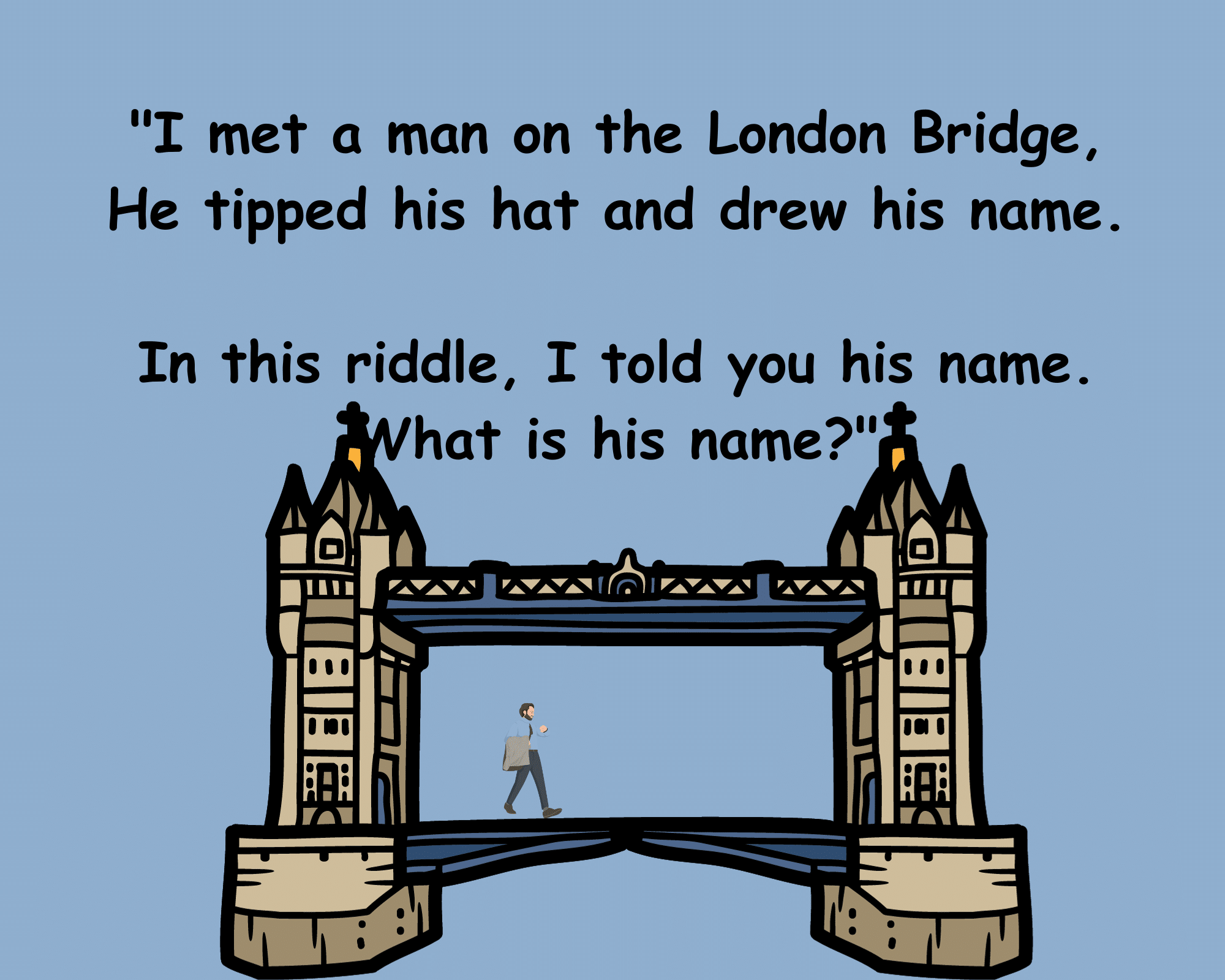The riddle “I Met a Man on the London Bridge” is a popular one that plays on the double meaning of words. Here’s the riddle:

“I met a man on the London Bridge,
He tipped his hat and drew his name.
In this riddle, I told you his name.
What is his name?”
The key to solving this riddle is recognizing that it’s a play on words. The phrase “I met a man on the London Bridge” is meant to be taken literally. The person who met the man is on the bridge, and the puzzle is asking for the name of the man.

The answer to the riddle is actually embedded within the question itself. Solving it lies in the phrase “drew his name.” The word “drew” can have two meanings:
1) to sketch or create a drawing, and 2) to pull or extract.
So, when the riddle says, “He tipped his hat and drew his name,” it means that the man on the London Bridge literally drew (pulled) his name from his hat. Therefore, the answer to the riddle is “Andrew.”
Explanation:
The key to solving this riddle lies in the phrasing. When it says, “He tipped his hat and drew his name,” it’s playing with the sounds of the words. If you say the phrase “Andrew” quickly, it sounds like “and drew.” So, the man on the London Bridge is metaphorically drawing his name by saying “and drew,” and the name itself is Andrew.

“He tipped his hat”: This part suggests that the answer is related to the act of tipping a hat, which can be associated with the name “Andrew” because it sounds like “tip” and “drew.”
“Drew his name”: Here, the wordplay involves the dual meaning of “drew” as both pulling or extracting and creating a drawing. In this context, the man is pulling his name from his hat, and the name is “Andrew.”
So, the man’s name is Andrew, and the riddle is a clever play on words.

